Introduction
Have you ever heard of the phrase “work smarter not harder?”
For most of us, that’s easier said than done.
When running a small business or ecommerce-based startup, it can be pretty tricky to put those words into action.
You can quickly find yourself working more than 60 or even 80 hours every week to keep your business afloat.
And it takes even more hours to find scalable growth.
Growing a business from the bottom up takes a lot of long days and constant dedication.
And if you want to get to a place where you can hire a slew of new employees to take on tasks and remove some of your workload, you need more money to pay them.
To get the money, you have to put in the hours.
It can become a vicious cycle.
And it’s one that will do some major damage to your work-life balance.
You’ll quickly burn out if you spend all of your waking hours working on your business.
So, what do you do? How do you save time and cut your workday to just four hours a pop without risking a drop in efficiency or unfinished tasks?
For starters, you take some tips from Patrick Lehoux, the founder of Bottle Cutting Inc, a DIY glassware company.
He began outsourcing and automating tasks to cut his 60+ hour work week down to just four!
His three million dollar business was not an easy one to run. But he needed to find ways to cut down his time to enjoy his life, too.
In this article, we’ll walk you through the steps that Patrick took to cut down his work hours while still supporting growth in his business.
Then, we’ll show you exactly how you can implement those tactics for your own business and work schedule.
Let’s jump in!
How Bottle Cutting Inc. founder used automation and outsourcing to work less
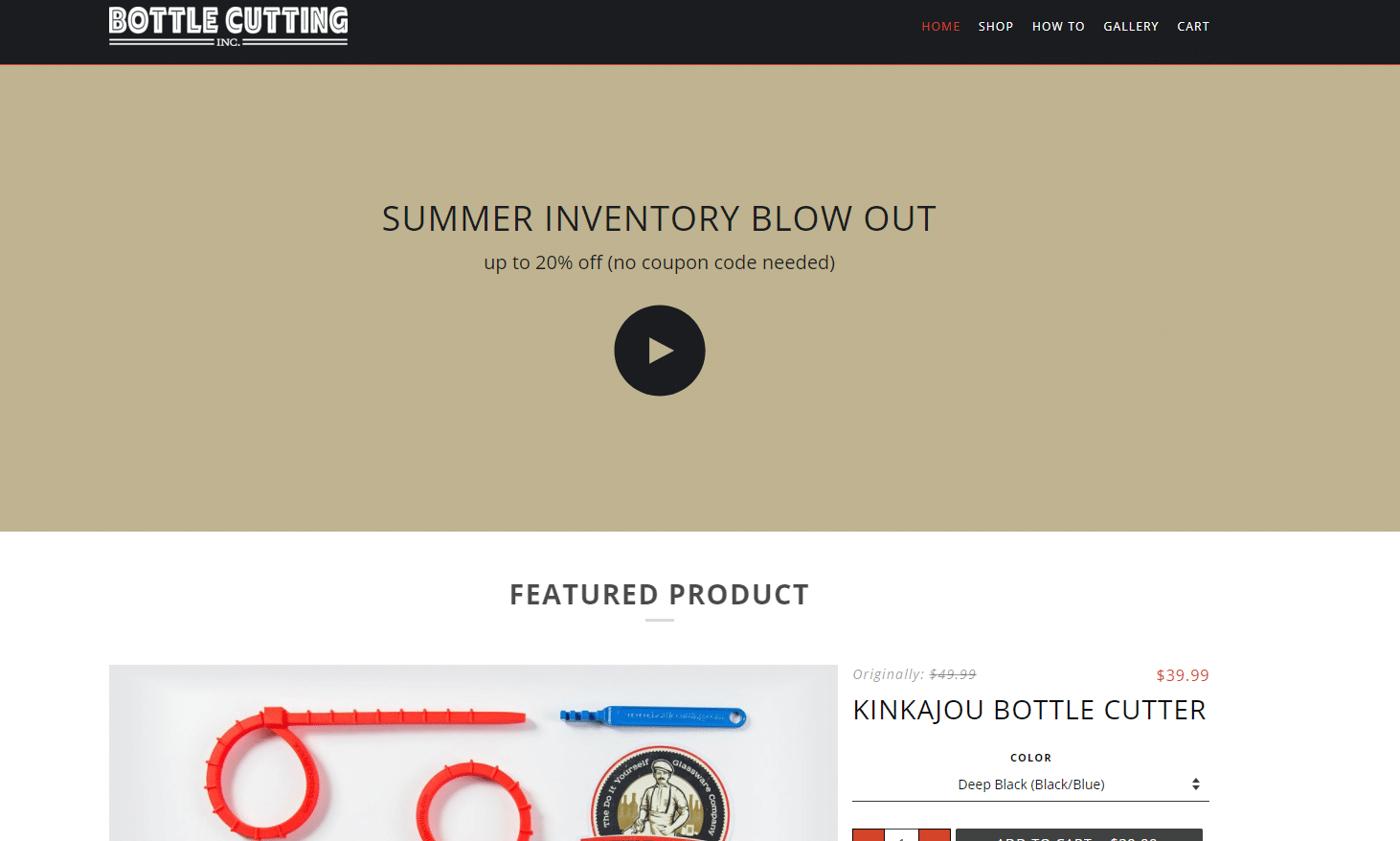
Patrick started Bottle Cutting Inc. in 2012, in his home city of Sudbury, Ontario, Canada.
He still makes the majority of his sales on his first invented product, the Kinkajou Bottle Cutter:
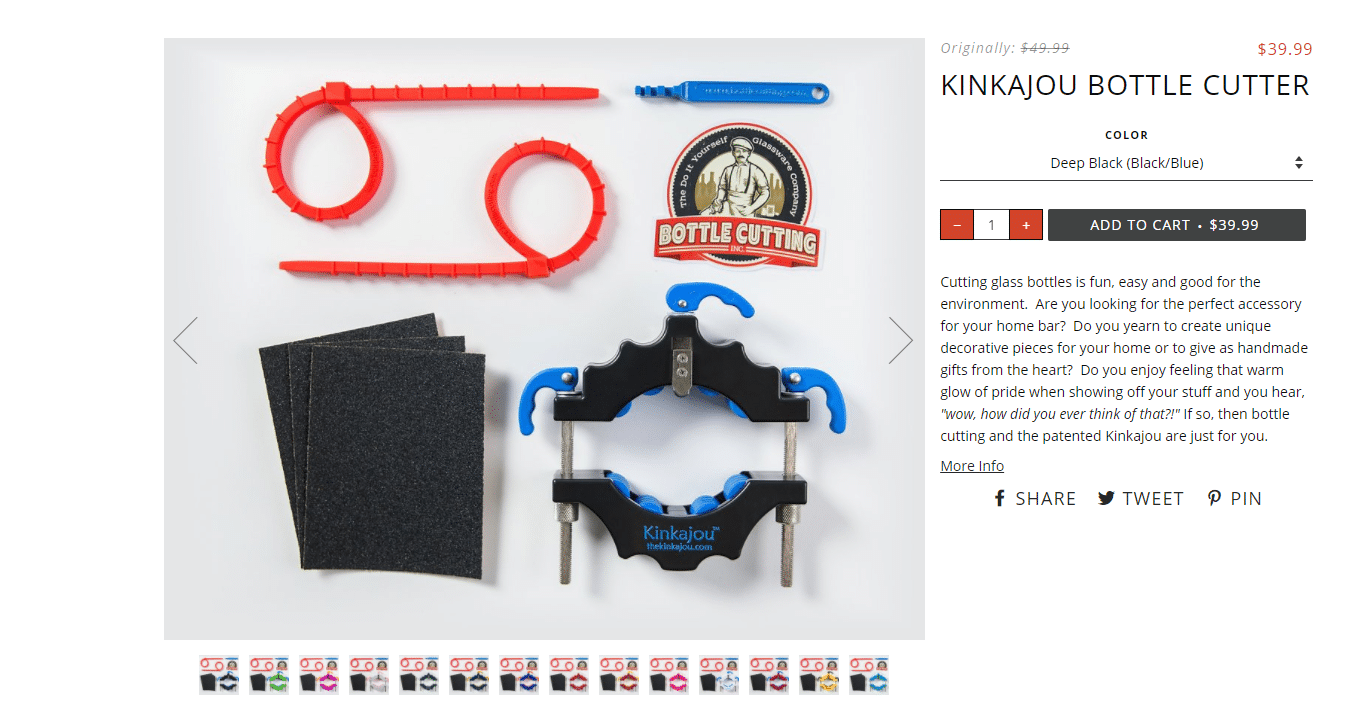


Bottle cutting isn’t a new invention. It’s been around since the 70s and it has since made a resurgence in the 21st century.
The basic idea is to take great bottles and reuse them for other things, rather than tossing them into the recycling bin.
Patrick spent hours grinding away daily to capitalize on this resurgence and make his business grow.
In the beginning, he found most of his traffic and growth by putting his product up on Kickstarter.



He raised more than $80,000 with more than 1,000 investments. It’s safe to say that his product was a hit.
Patrick didn’t start out as an entrepreneur, though. Before running this business venture and finding his first taste of success on Kickstarter, Patrick was working in the internet service provider industry.
He was developing ISPs and even sold his own ISP to a larger firm.
But then, he went on to pursue an MBA to get more business education for future entrepreneurial ventures.
He soon found himself developing mobile apps for Android, Blackberry, and Apple.
This all helped Patrick build a diverse background in technology and entrepreneurship.
But that also meant that he’d often face a giant problem:
Being so busy that he couldn’t enjoy his life.
As his Bottle Cutting company started to take off, he ran more Kickstarter campaigns to raise even more money.
Which presented even more hurdles.
He was being contacted by big stores like Walmart for purchase orders.
He needed new website designs and product shots.
Little, and big needs, like this kept on coming.
The work was simply piling up, and he couldn’t work more than 80 hours every week and maintain a healthy lifestyle.
So he hired contractors for the work that he couldn’t do efficiently.
He started automating processes that were too time-consuming.
Now, Patrick says that he works every day from 11 a.m. to 2:30 p.m.
In just a few hours of work every day, he is still able to maintain a multi-million dollar business.
Want to follow his lead and cut down on your time spent working while still maintaining steady business growth?
Here’s how.
5 steps to automate and outsource time-consuming tasks
Step 1: Outsource tasks to freelancers
Running a business from the ground up means you need a diverse skillset.
And if we’re honest, we don’t all personally have every single tool needed to grow a business.
But we also don’t have the money to spend on dozens of employees to help, either.
And trying to do it all on your own is likely going to be a time-sucking effort that hinders your growth.
But, being an entrepreneur doesn’t mean doing everything on your own.
It means working to make your dream happen by any means necessary.
And outsourcing is a means that should be seen as an entrepreneur’s best friend.
Why? Because it frees you up to focus on the tasks that you do best, not the ones that you do worst.
To start outsourcing, you need to make a list of daily tasks and big-picture, big-ticket items.
Open up your Google Sheets and start to lay out this information:



Make a nice, neat, and organized spreadsheet that details your basic daily tasks, how much time is spent on them, their priority, and if you can outsource it.
Obviously, you can’t outsource everything. That’s not the point. You need to find what tasks are taking up tons of time that you can outsource.
This includes things like social media, blogging, and website management.
That leaves you more time to focus on growth, networking, and managing the business.
Doing this basic, five-minute exercise will help you locate tasks to hand off, but will also help you realize how much time you might be spending on jobs that don’t deserve your time.
Once you’ve located some of these, you have a few options.
If you can’t hire someone, or just need some freelance work done, your best bet is to work with a freelancer on Fiverr or Upwork.
Fiverr is great for getting quick tasks done. So let’s start there.
On Fiverr, you can get almost any type of freelance task completed with minimal money spent.
For example, if you need infographics made for your blog, you can get those done on the cheap:



Fiverr is great for one-off tasks.
If anything comes up that you simply don’t have 1-2 hours to spend time on, Fiverr should be on your go-to list.
Upwork is a great site to use for more in-depth job-oriented tasks.



For example, let’s say you need to write two blog posts this week.
After all, according to HubSpot, the more blog posts you write, the more traffic you get:
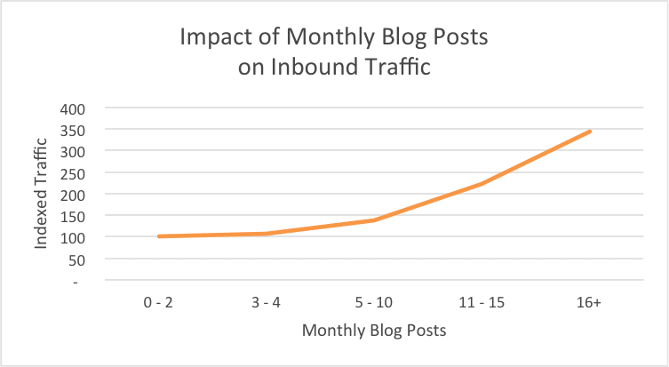


But each blog will take a few hours to write.
If you want to work a four-hour day, you can’t write these posts.
Your time is much better spent on meetings and tactical, big-picture business growth.
Head to Upwork and look for a blogging freelancer in the search bar:



Next, you can start to filter the results based on your industry, hourly rate, and job success:
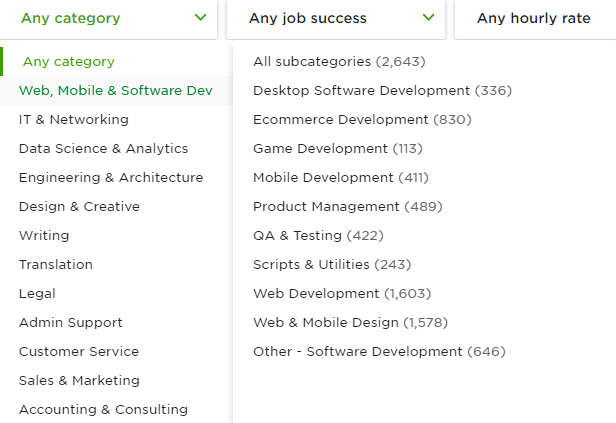


Make sure to pick the category that best resonates with your business to get blogging freelancers that are skilled in your niche.
If you sort by price, you can find cheap freelancers that have great blogging experience:
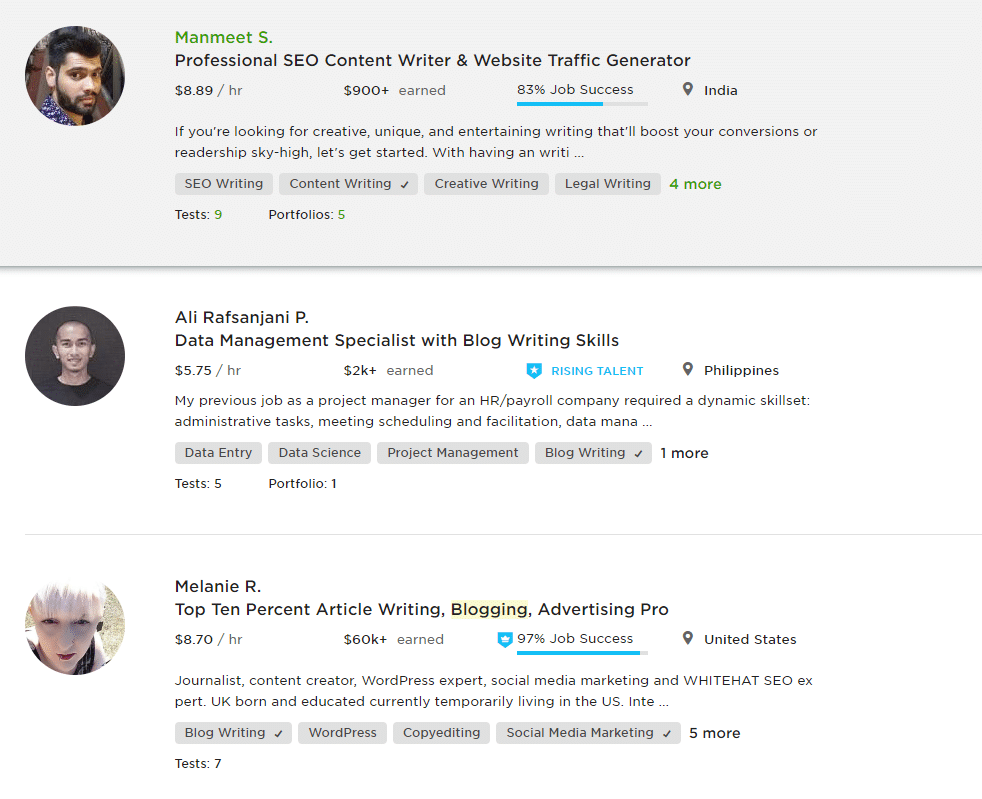


Once you find a great freelancer, simply contact them and start developing an agreed upon price:
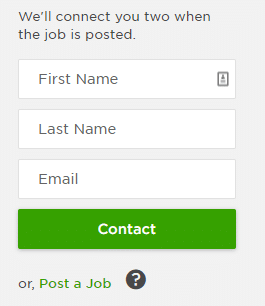


If you want, you can post a job too. This way, you can have freelancers apply and give you resumes and samples.
Click “Post a Job,” and you can start to build out the job application profile:
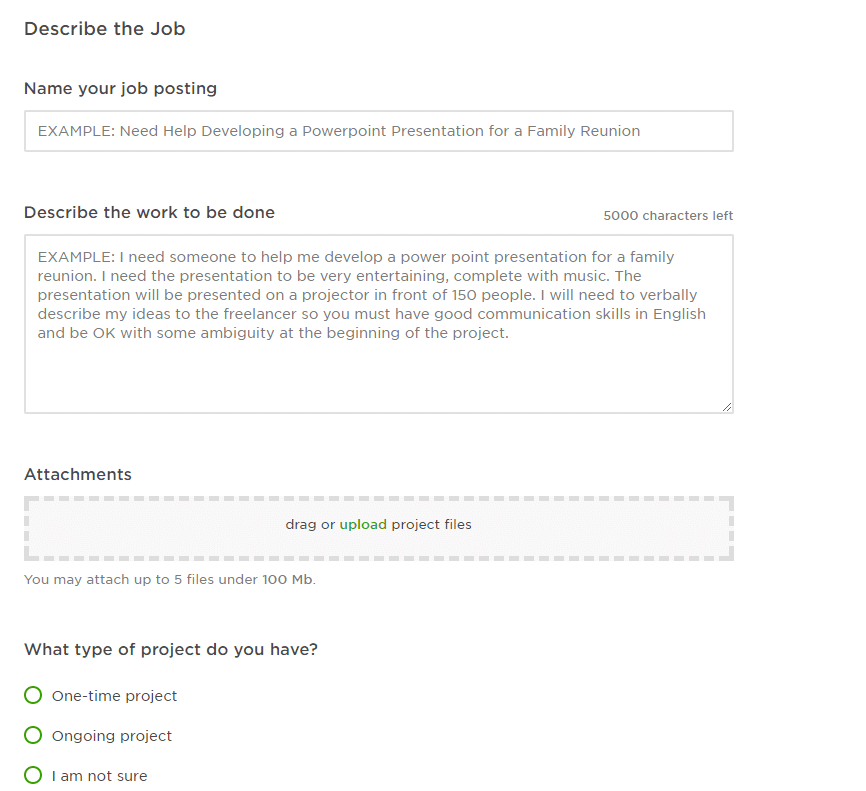


You can even hire multiple freelancers to take on the project.
Upwork is one of the greatest ways to outsource tasks that you simply can’t afford to waste time on.
Identify those tasks that are taking up too much of your day and then find the right freelancer on Upwork or Fiverr to take care of it.
Step 2: Automate social media with IFTTT
It’s no secret that social media is time-consuming.
You can find yourself wasting hours every single week just browsing your Twitter feed, not to mention all the time spent posting and scheduling valuable content for your business.
On top of that, you have to be sure to actually engage with your followers and try to get more fans.
Sprout Social found that regular, everyday Americans are spending nearly an hour daily browsing Facebook.
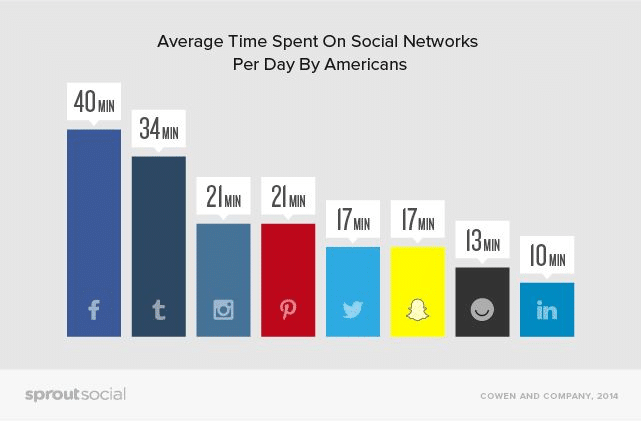


Almost all of the time that we spend on mobile phones is focused on social media and messaging apps, too:
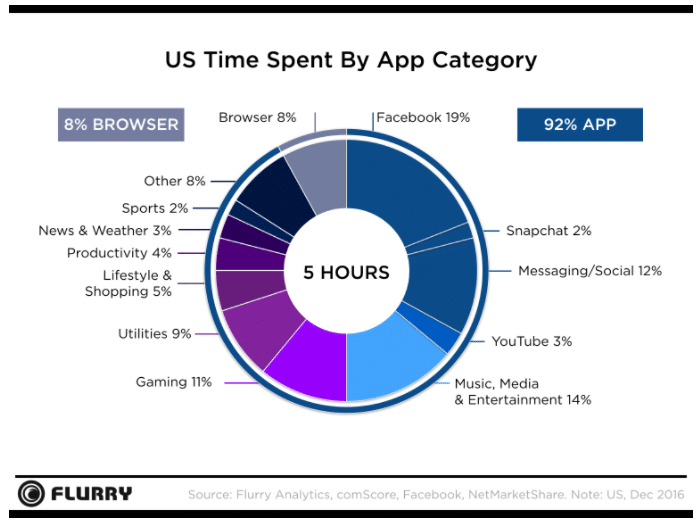


And that’s just the common browsing of the everyday citizen.
Those numbers are likely much higher for businesses who depend on social media for brand awareness and traffic.
This means you could be spending hours every day or week on these platforms.
And you can’t afford to do that.
Not when you have 100 other tasks on your list.
But, social media can’t just be thrown on the back burner, either.
It’s necessary for businesses in the 21st century to actively engage on social channels.
So, what do you do?
You automate your social strategy. Start cutting your daily time to just a few minutes a day of monitoring rather than hours of scheduling.
Start by using IFTTT.
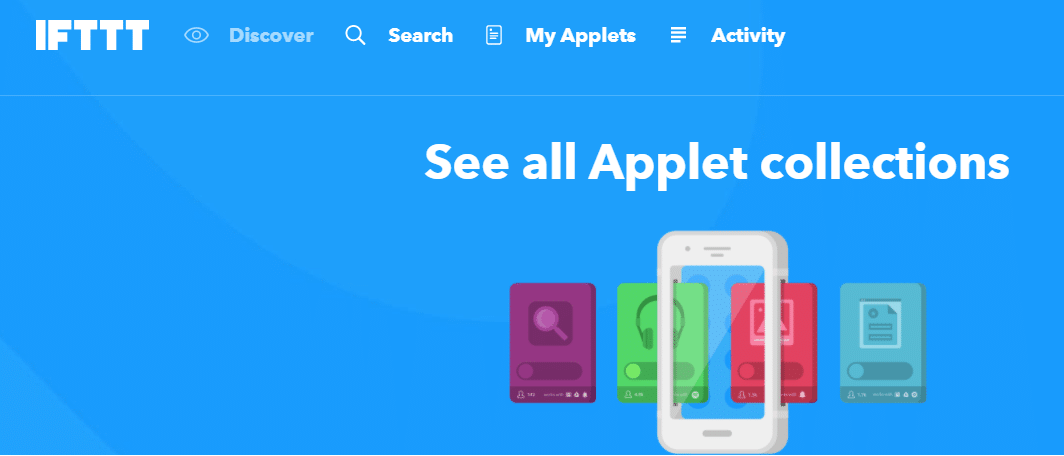


IFTTT is a powerful, completely free automation tool that requires no software or downloads.
You simply create a free account, and you can begin automating your social media strategy in just minutes.
To get started, create an account using Facebook, Gmail, or your own email address:



Once you create your free account, you can start to browse various automations and app integrations:



IFTTT is a simple application.
You search and select an integration platform, like WordPress, and then you search for an action.
In this case, WordPress would be the trigger. The action could be something like: post on Twitter.
This makes your automation sequence: when a new blog post goes live on WordPress-based website, post it on Twitter.
That’s powerful, free automation.
You don’t need to spend time on a scheduling tool anymore. You can literally post a new blog post on your website and have it instantly get shared on every social account!
To do this, search in the search bar for WordPress:
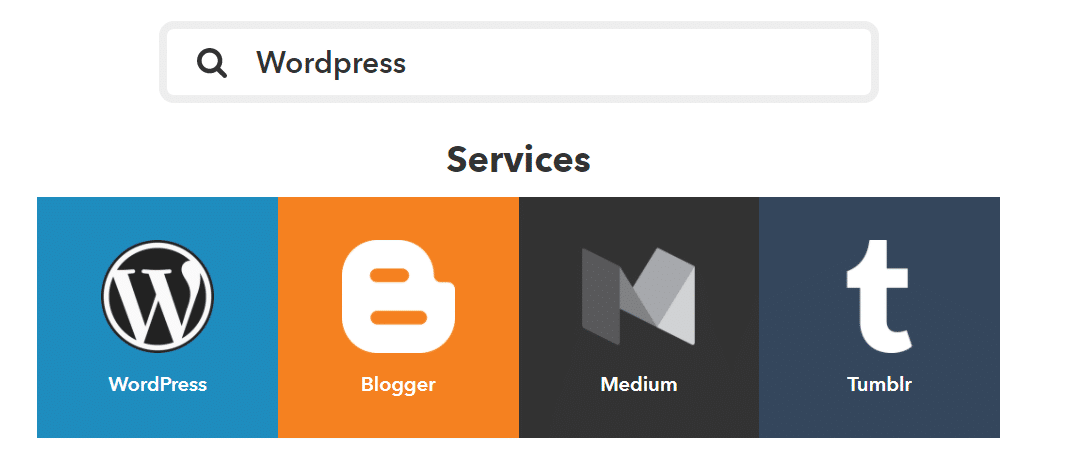


You can also connect multiple platform types if you don’t use WordPress.
Next, browse the various integrations that are offered.
For example, check out this social media automation workflow:



You can instantly share new posts from your WordPress-based blog to Facebook and LinkedIn.
If you want to set up an integration, simply click on the desired platform.
To do this, give IFTTT authorization to access your account details:
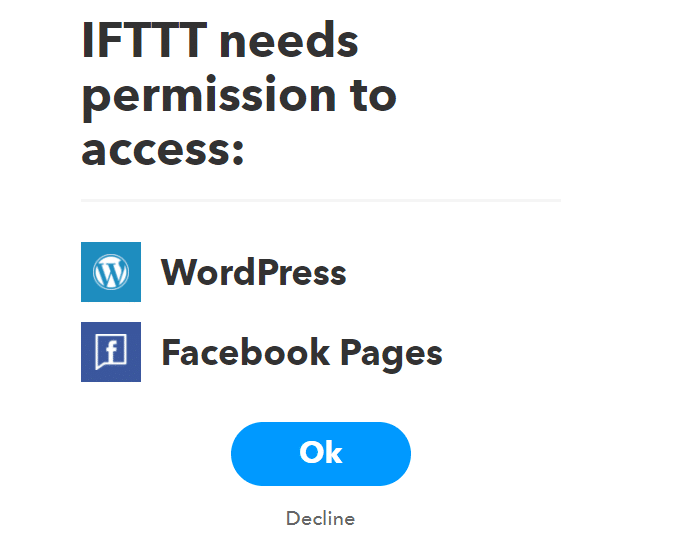


Once you connect these, you simply sit back and watch the automation do the work for you!
No more scheduling, writing posts, or checking to see if your last post went live.
Just let the automation run, and your social strategy will only take you minutes every day.
Step 3: Create a lookalike audience and automate Facebook Ads with rules
Patrick credited much of his success to Facebook Ads.
He found unparalleled growth when creating custom lookalike audiences on Facebook and then automating the process.
He was spending thousands of dollars a day on Facebook Ads because they worked and took little-to-no time to manage.
And it only makes sense, considering Facebook has more than two billion monthly active users now.
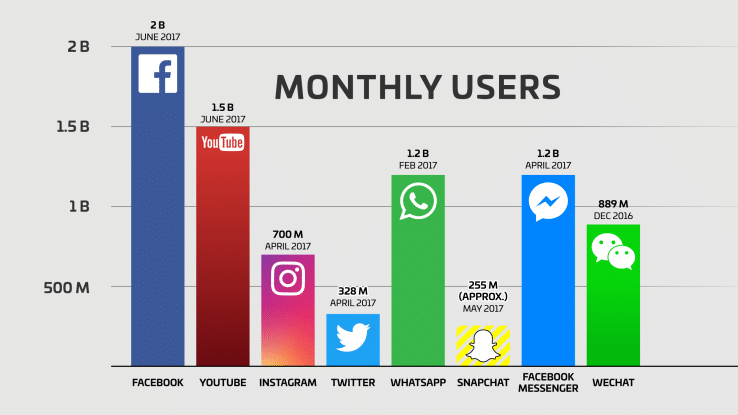


The user base of Facebook keeps growing daily, and that means Facebook is becoming one of the best advertising platforms on the web.
The audience targeting options are diverse, specific, and powerful.
You can target anything from interests, job titles, hobbies, income, and even spending habits.
It’s hyper-targeting that can grow your business with just a few dollars a day.
To get started, you need to create a lookalike audience.
Lookalike audiences are people that are matched closely to your existing customer base.
It works by connecting your existing customer emails to Facebook accounts and then matching those accounts to a similar group of other accounts to target.
It is great for driving relevant targeting groups back to your products.
To get started, head to the Facebook Business Manager and click on the audiences section:



Next, select “Lookalike Audience” from the “Custom Audience” dropdown:



The next step is to identify what you want to create your lookalike audience from:
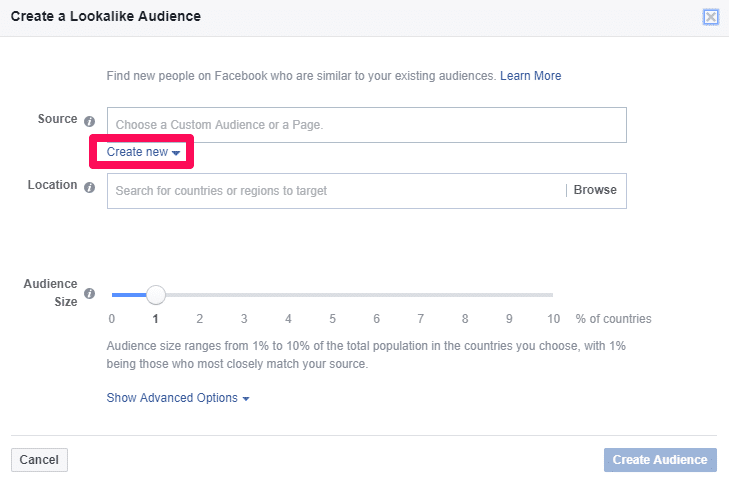


Click “Create new” to view your options.
You can either upload a new list, use a previous custom audience if you have one, or create a new one.
For this example, you can create a new lookalike audience based on your customer file:



Use this selection to add contacts and previous buyers to this audience via MailChimp or your own downloaded list:
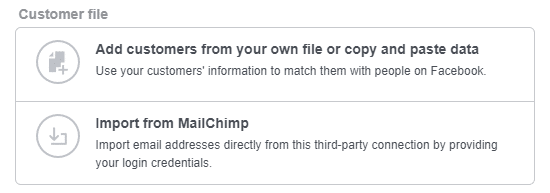


Once you’ve uploaded a custom list, you can head back to your lookalike audience and select the size that you want to replicate:



This scale is from 1-10% and will either result in a smaller or larger audience.
If you want more specific, refined targeting and a smaller audience, then place your size at 1%.
If you want a larger audience, place it at 10%.
After you’ve created your lookalike audience, the grunt work is done.
Now you can focus on automation and running ads without ever touching them on Facebook.
Facebook Ads can take hours of monitoring every week for success. But there’s actually a way to automate all of that work.
To do this, head to your Facebook Ads Manager and create a new rule:



The next step looks slightly complicated:
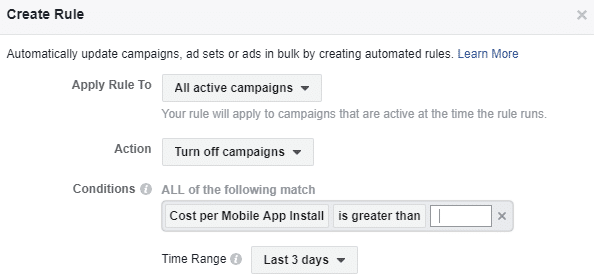


But here’s the basic breakdown:
Condition = the trigger. If this “condition” happens, it will trigger the action.
Action = the tangible step that will be taken once the condition is met.
Apply rule to = what the action will be applied to.
Basically, the image above is saying:
If the cost per mobile app install is greater than X (specific number), turn off the campaigns, and apply that to all active campaigns.
Make sense? Good.
Here are the types of rules you can create:
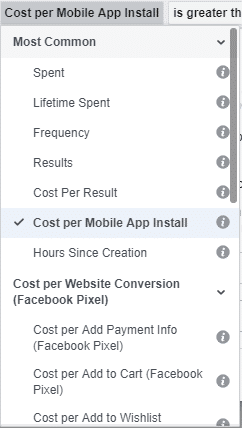


The options are almost limitless. You can create unlimited rules for tons of different actions that would normally take you hours of optimization each week.
For example, you can create a rule that increases your ad spend or budget when cheap sales are generated:
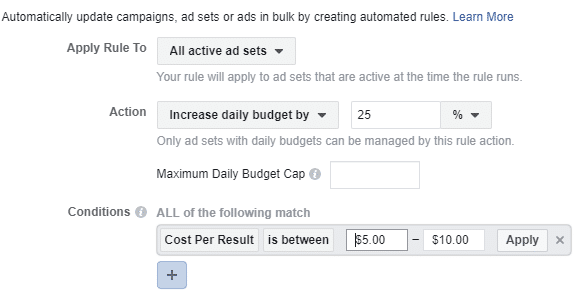


This rule is saying:
If the cost per result is between $5 and $10, increase my daily budget by 25%.
If you find that cheap sales are occurring, you can have Facebook automatically take advantage of this for you without you having to do the work.
You can start increasing your budget to get more of these cheap sales.
And if the condition isn’t met, your budget won’t change.
Automated rules are the way to go when it comes to optimizing Facebook campaigns.
If you want to get more specific, you can also pause campaigns that are costing too much:



Be sure to select the email notification if you want to be notified when these changes happen:



You can create rules for click-through rate, cost per click, cost per conversion, and more.
Create dozens of rules that will allow you to spend less than 10 minutes every day checking your ads.
The rules can monitor spend, budget, and conversions to give you great results.
Step 4: Automate ecommerce tasks with Zapier
Managing an online store can take up some time.
You have to keep up with orders, inventory, and make sure that customers get what they need.
You also have to stay incredibly organized on the back end if you want to produce the best customer service possible.
And if you run your own store, you likely are spending too much time doing exactly that.
Zapier is a tool that works just like IFTTT but has more integrations for ecommerce-based platforms.
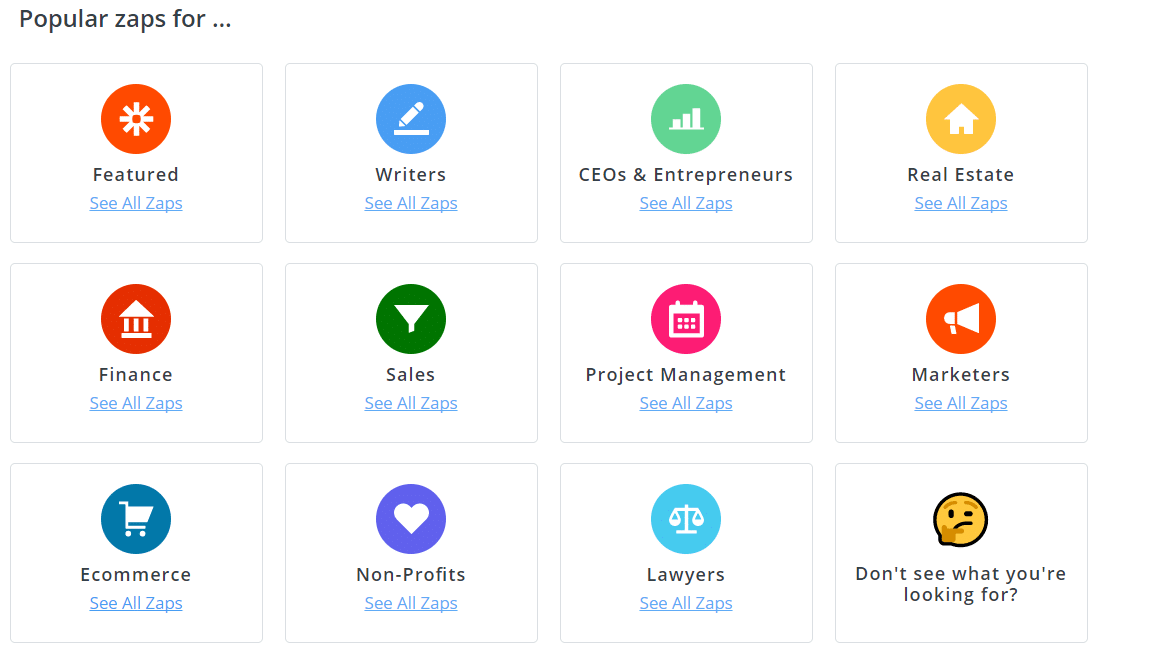


IFTTT doesn’t connect with Shopify or Magento, making it less useful for ecommerce-based automation.
To get started with Zapier, head to their homepage and create a free account.
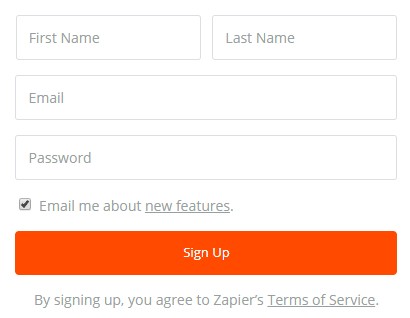


You can instantly start to create different Zaps, or automation-based workflows that help you save tons of time.
First, search for your preferred ecommerce platform:
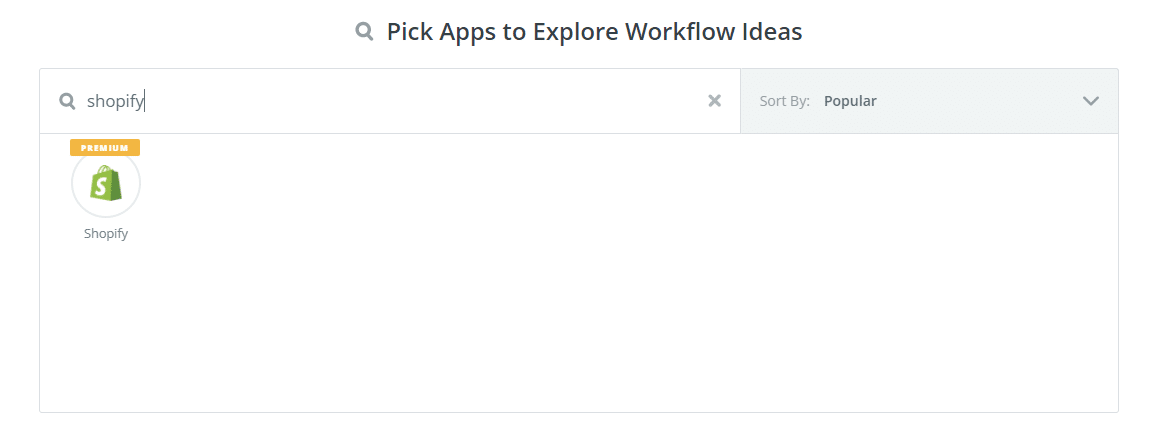


From here, click on the result to generate ideas for automations:
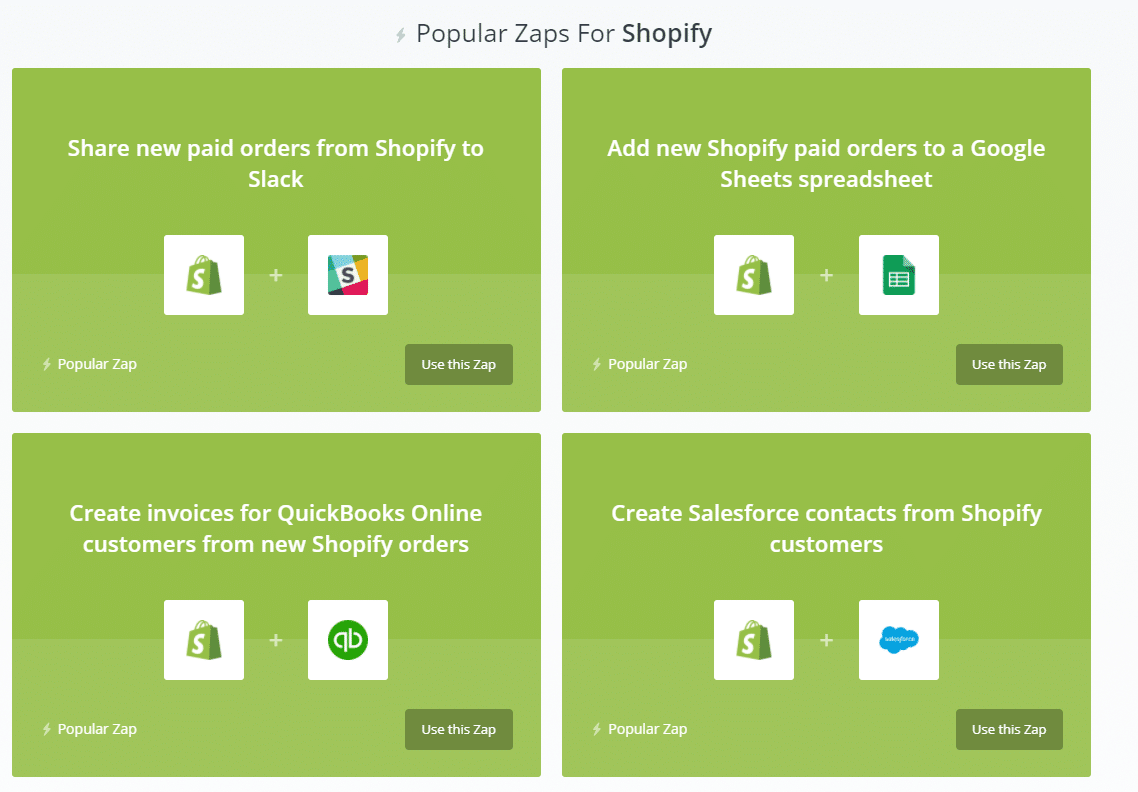


Zapier has incredible ecommerce integrations.
If you want to share new paid orders from your online store in Slack, you can easily set that up.
You can create new invoices with QuickBooks automatically.
You can even add new sales contacts into your favorite CRM or email management platform.
You can skip all of the arduous steps of downloading lists and running new campaigns.
If you use an invoice software, chances are Zapier has it integrated.
To use any of these Zaps, simply click “Use this Zap” to get started.
This will bring up a template of this automation workflow for you to tweak and use.
For example, here’s how the Shopify and QuickBooks integration works:
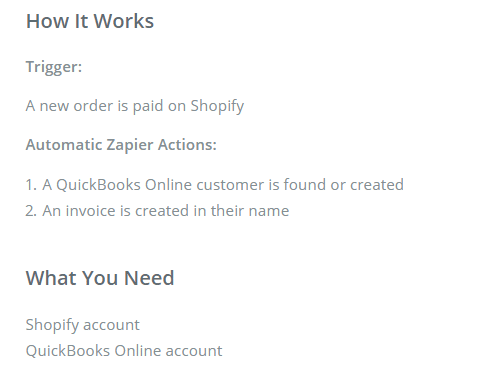


Just like IFTTT, the Shopify purchase order would be the trigger.
The resulting action would be adding that customer purchase to QuickBooks and creating an invoice in their name.
Say goodbye to manual invoices and cut down on time with this Zapier integration.
Remember, these integrations are diverse. Almost any task that takes you time can be automated with Zapier.
If you want to send an email campaign to that new purchaser, you can easily connect your favorite email platform like MailChimp.
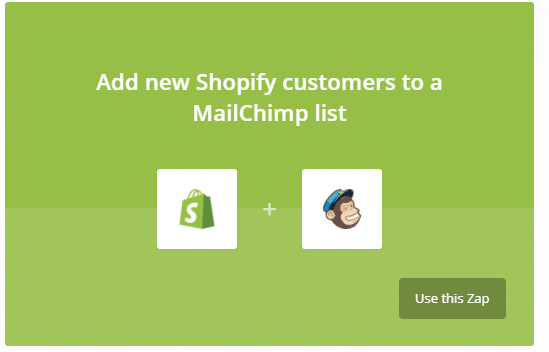


Once you start to build out a Zap, all you have to do is connect your accounts to authorize the transfer of information:
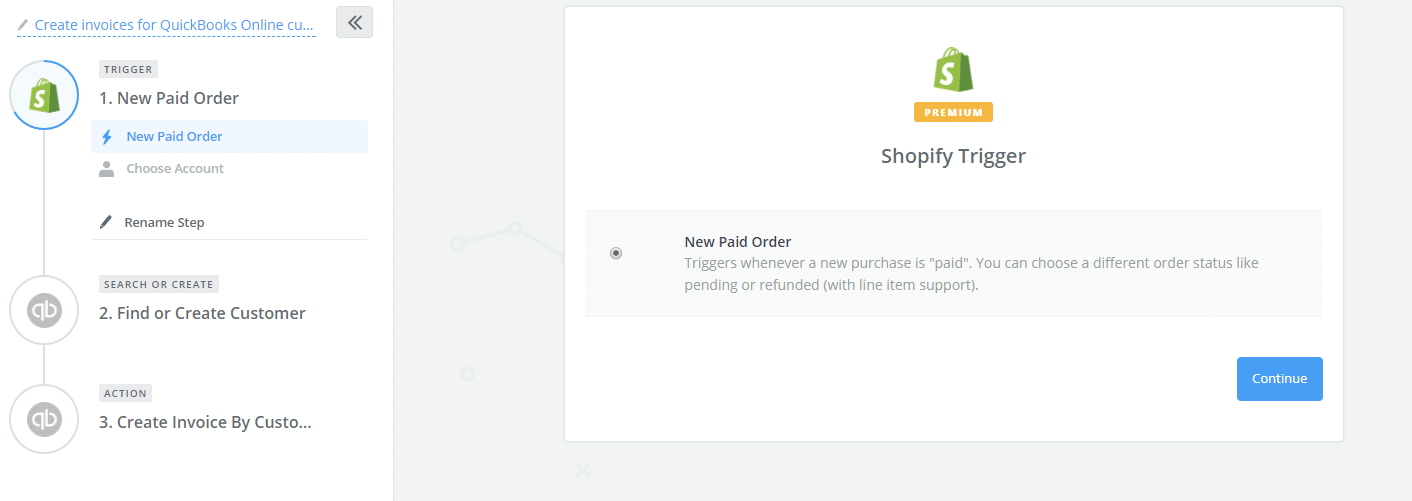


Use this software to decrease your time working. It may take you a few hours to set up 10 integrations for your most tedious tasks, but in the long run, you’ll save hours each week.
Step 5: Stay on top of important emails without spending hours in your inbox
Answering emails can be the bane of every entrepreneur’s existence.
Getting hundreds to thousands of emails a week can drain the life out of you while also taking up tons of time.
According to a McKinsey study, the average worker spends 30 hours every single week checking their email.
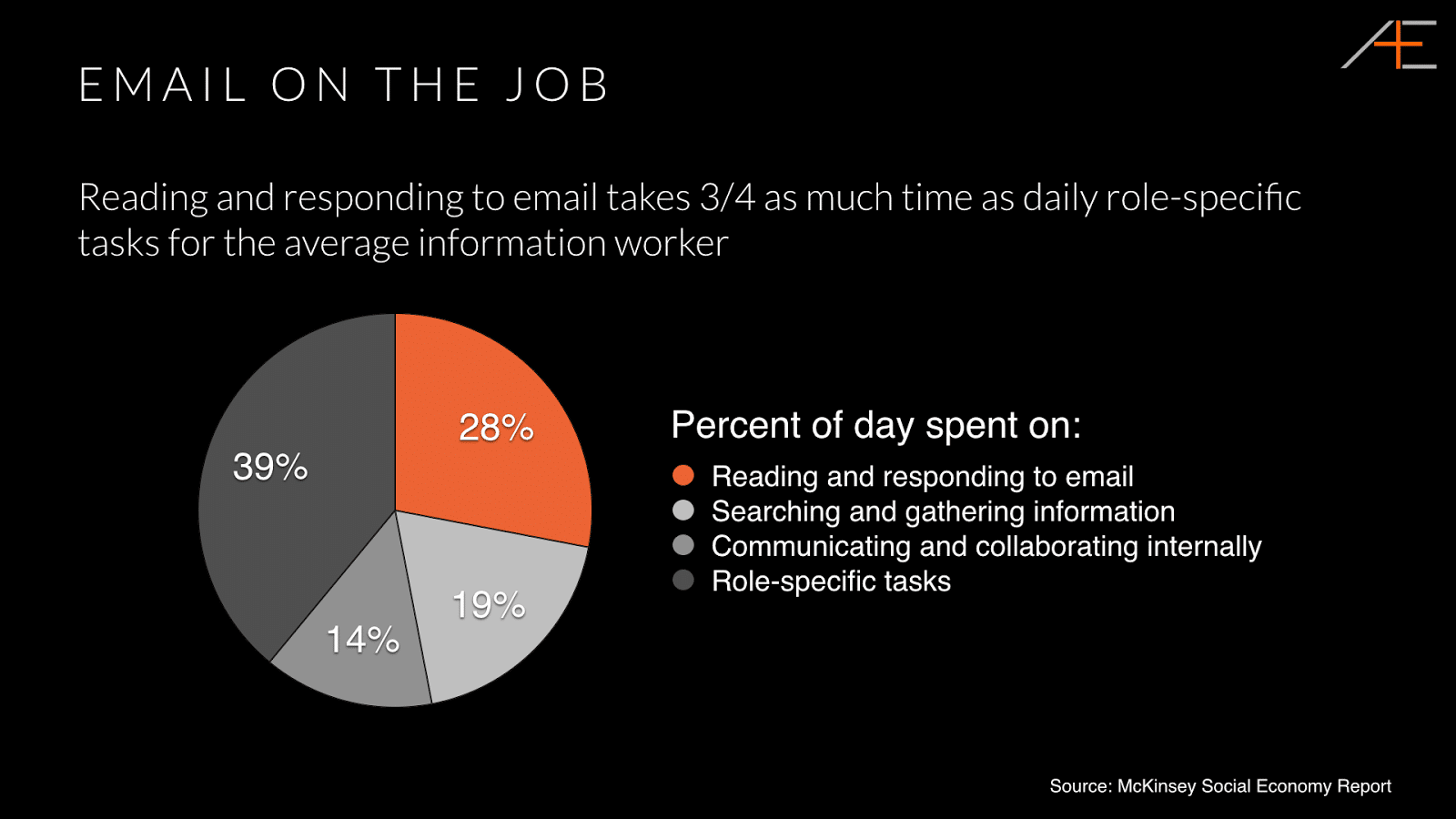


If you work a five-day work week, that means you’re spending six hours a day on email.
And that leaves literally no room for business development and growth.
In fact, according to that same study, the majority of us even check our email when we aren’t working.
Even on vacation or weekend nights.
Major work-life balance killer.
So, how do you automate this?
You use Zapier to give you personalized messages on Slack every time an important email is received.
To do this, head to your integrations dashboard and locate the Gmail + Slack integration:
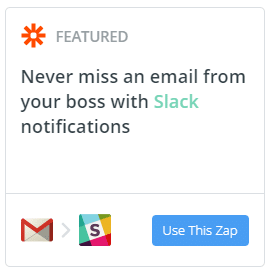


This Zap will automatically send you a message on Slack, a popular work messaging app to let you know when you get an email that you absolutely need to check.
So you can turn off those pesky Gmail notifications that buzz your phone every five minutes and only respond to emails that are of dire importance.
To get started, click “Use This Zap” and make sure that Gmail is selected as the trigger:
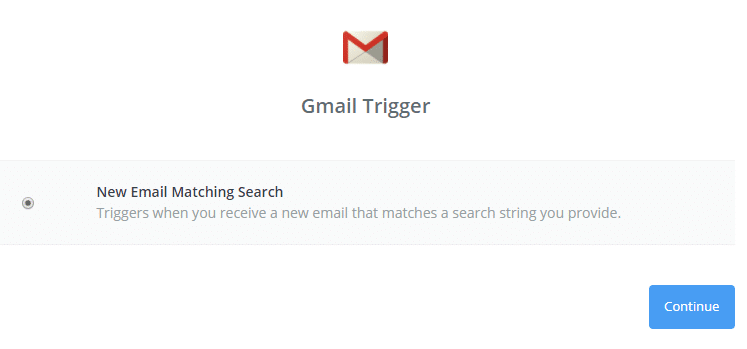


Next, connect your Gmail account. Now, you can enter the search query string that will trigger the automation:
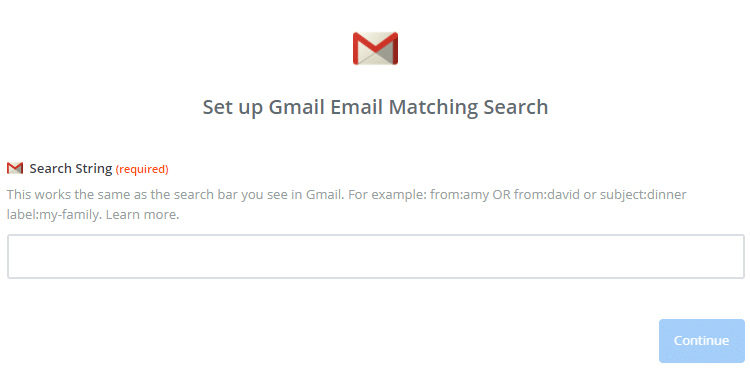


If you want notifications from specific emails, you can type:
From: David
Or, you can even type in the exact email address.
If you have big clients that you need to nurture fast, or have supply chain managers that you need to always be in contact with, set up a Zap for it.
That way you will be notified immediately without having to sift through hundreds of emails.
Put your priorities in place with this Zap and save yourself hours every week on inbox management.
Conclusion
Running a multi-million dollar business is no easy task.
Even maintaining and managing a small ecommerce startup can take up the majority of your waking hours.
It’s even harder when you don’t have any employees to pick up the slack.
It seems like nothing will ever get done, and your weekly hours clocked are piling up.
But thankfully, there are ways to reduce your work time while still growing your business.
Try implementing Patrick’s tricks he used to cut his time to just four hours every day.
Follow these tactics, and you’ll be on your way to a shorter work week in no time.
Remember: smarter, not harder.
What are your best time-saving tips? How do you outsource problems for better efficiency?

Comments